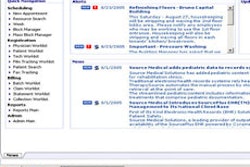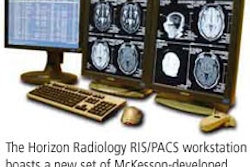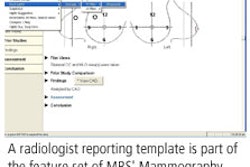The practice of radiology is arguably busier than it ever has been in medical history. Regardless of the volume, however, the standard of patient care is not diminished. In particular, radiologists need to know that when they report a significant unexpected finding on a study that the referring physician has received this notification and acted upon it.
"Despite this standard, for a variety of reasons it remains possible that the direct care provider might receive such notification but not initiate an appropriate workup," wrote the authors of a study recently published in the American Journal of Roentgenology (April 2006, Vol. 186:4, pp. 933-936).
To ensure that significant unexpected findings, such as a malignancy, are given the appropriate workup, a group from the Department of Veterans Affairs and the department of radiology at the University of Michigan in Ann Arbor developed and instituted a semiautomated process for notification of critical diagnostic imaging findings.
The team wrote that it created its semiautomated coding and review process in response to an institutional sentinel event in which evidence of unsuspected malignancy was noted on a preoperative chest radiograph but was not appropriately acted on because of a series of communication failures.
"The solution to error lies not in accountability or punishment of individuals, but rather in redesigning the system to reduce the risk of error and to limit and manage the consequences when errors do occur," the authors wrote.
They reviewed 37,736 coded radiology examinations performed between April 2003 to March 2004 at their institution to assess the results of the semiautomated coding and review process. The studies included conventional radiography, sonography, CT, MRI, barium examinations, excretory urography, myelography, and angiography.
The researchers developed a protocol based on their institution's diagnostic coding schema, which was simplified to include only three codes related to patient safety. Code 1 indicated no unexpected findings requiring follow-up; code 4 related to detection of an unexpected acute finding (not cancer) requiring follow-up; and code 8 related to detection of an unexpected finding indicating malignancy requiring follow-up, the authors wrote.
"When a significant unexpected finding such as malignancy was found, the interpreting radiologist contacted the referring clinician or appropriate member of the clinical team caring for the patient by telephone or, rarely, by secure e-mail," they wrote.
This contact was documented in the radiologist's report and was coded in the electronic record. Equivocal findings, for which the radiologist recommended further evaluation because of a concern for malignancy, were assigned a code 8 and the referring clinician was appropriately notified, the team noted. All reports required one of the three codes before it was finalized.
Each week, a nurse practitioner cancer registrar monitored the electronic clinical record for documentation of appropriate follow-up of reports that had been coded as possible malignancy, which averaged about seven or eight per week. This included reviewing all patient notes, patient appointments, and additional radiology or pathology visits scheduled.
"If the registrar could not ascertain that the referring provider was aware of the unexpected finding of possible malignancy or that additional investigation had been ordered, if required, within two weeks after initial radiologic interpretation, the registrar contacted the ordering provider to ascertain why no additional follow-up had been arranged," the team wrote.
A total of 390 cases were assigned a code 8 and 360 cases were appropriately investigated within a two-week period, according to the authors. Of the 35 patients who did not receive follow-up noted in the electronic medical record (EMR), 25 had follow-up exams initiated but these had not been documented in the EMR by their referring physician. One patient died within three weeks and one patient did not want to follow-up on the findings, the group noted.
"Eight patients would have been completely lost to follow-up if this semiautomated coding and review process had not been instituted," the authors wrote. "Of these eight patients, five were ultimately diagnosed with a malignancy."
The authors found that the type of imaging test or whether that referral was from a nurse practitioner or physician did not predict appropriate follow-up. They did find that patients referred from the urgent care and emergency department services were significantly more likely to have appropriate documentation of follow-up.
The researchers observed that communications errors are often the source of untoward outcomes in the practice of radiology, and that some of these errors that contribute to patient error are structural in nature. By leveraging the existing radiology reporting system and instituting an unexpected finding check mechanism without adding to the workload of the reporting radiologist, the group has ensured appropriate follow-up clinical management at their institution.
The authors noted that large academic centers with a very high volume of cases may not be able to easily implement their system; however, that practices with moderate volumes and RIS/PACS in place may want to consider the integration of such a system in their practice.
"We believe that the further integration of PACS and reporting systems with searchable field functions will allow the use of these information systems in efforts to improve the quality of care," they wrote.
By Jonathan S. Batchelor
AuntMinnie.com staff writer
April 28, 2006
Related Reading
Radiology safety challenging in ER environment, March 5, 2006
X-ray contrast agents rarely fatal, February 28, 2006
USP report blasts radiology medication errors, January 19, 2006
Downstream systems integration key to CPOE effectiveness, December 29, 2005
Homegrown tool improves radiologists' workflow, December 16, 2005
Copyright © 2006 AuntMinnie.com



















